 Korea Times
Korea TimesBy Jung Sung-ki
Staff Reporter, June 24, 2009
Amid growing concern about North Korea's high-stake nuclear gamesmanship, the United State has vowed to provide an ``extended'' nuclear umbrella to South Korea, where no tactical nuclear weapons are present.
Debates are under way, however, on the effectiveness of this in the case of conflict on the Korean Peninsula.
Proponents say the U.S. commitment to providing extended nuclear deterrence capabilities will help prevent the North from ``miscalculating'' that it would gain anything from missile and nuclear tests.
Opponents argue the U.S. nuclear deterrence pledge could only provoke the communist North and send the wrong message that Pyongyang is a recognized nuclear state.
``The U.S. extended deterrence means a stronger and broader defense against the North's chemical, biological and missile attacks as well as nuclear attacks. So this is huge step in the joint defense of South Korea and the United States against North Korea,'' a senior researcher at the Korea Institute for Defense Analyses (KIDA) said.
``But there is concern, at the same time, that talking too much of the nuclear umbrella would give North Korea a good excuse to claim itself to be a nuclear power,'' the researcher said.
At the June 16 summit in Washington, U.S. President Barack Obama reaffirmed that the United States would provide an ``extended nuclear umbrella'' to South Korea in response to increasing nuclear threats from North Korea. Pyongyang conducted a second nuclear test last month and test-fired several short-range missiles, defying calls by the international community to give up its nuclear ambitions.
This was the first time for a U.S. leader to clarify at a summit coverage of South Korea under its nuclear umbrella.
The U.S. government has promised since 1978 that it will provide necessary nuclear deterrence capabilities for South Korea against North Korea in the annual South Korea-U.S. defense ministers' meetings, but the issue had not been discussed at a summit level.
Under the extended nuclear deterrence pledge, military experts say, the U.S. military would mobilize all necessary capabilities to neutralize North Korean nuclear provocations.
For example, the U.S. Air Force could send B-2/52 bombers and other fighter aircraft carrying nuclear bombs, such as the B-61, to hit nuclear facilities in the North. Tomahawk cruise missiles could be launched from nuclear-powered submarines to strike targets.
The B-61 bomb is known to have a ``dial able'' explosive power of 0.3 to 340 kilotons and believed to be capable of destroying North Korea's key underground facilities.
U.S. fighter aircraft would also be ready to conduct surgical strikes with high-end bombs, such as bunker busters.
Redeployment of US nuclear weapons in S. Korea?
Some conservatives argue the government should ask the U.S. Forces Korea (USFK) to re-deploy its tactical nuclear weapons to deter nuclear-armed North Korea.
Tactical nuclear weapons (TNWs) typically refer to short-range weapons, including land-based missiles with a range of up to 500 kilometers and air- and sea-launched weapons with a range of around 600 kilometers.
The USFK removed its TNWs in 1991. Prompted by mounting concerns about the security of nuclear weapons in the former Soviet Union, then U.S. President George Bush announced in September 1991 that the United States would eliminate its entire worldwide inventory of ground-launched TNWs and would remove all nuclear weapons from surface ships and attack submarines.
Jeon Seong-hoon at the Korea Institute for National Unification said, ``As North Korea's nuclear capability increases, the effectiveness of the U.S. nuclear umbrella could decrease. In that context, I believe, the redeployment of USFK's tactical nuclear weapons, at least on a temporary basis, could be the best option.''
A military official concurred. The official, who requested to remain anonymous, said the USFK should deploy tactical nuclear weapons again as long as it is not violating the 1991 Washington-Moscow arms control agreement.
``Redeployment of air-launched tactical nuclear weapons do not violate the 1991 agreement,'' the official said. ``If there were 10 tactical nuclear weapons in the South, North Korea's nuclear threat could be easily neutralized.''
An Army commanding general, who has been in charge of military operations, expressed a negative view about the redeployment of tactical nuclear weapons to the South.
``Realistically, it's impossible and not feasible,'' the officer said, asking not to be named. ``Politically, such a move would face severe opposition from China.''
Self-Reliant Deterrence
South Korea's military is also planning to acquire weapons systems to help deter North Korea's lingering nuclear and missile threats on its own.
The military plans to increase the procurement numbers of precision-guided Joint Direct Attack Munitions (JDAM) and air-launched cruise missiles. It aims to buy 1,400 JDAMs by 2013 to bring its total number to 4,551.
The JDAM is a guidance tail kit that converts existing unguided free-fall bombs into accurate, adverse weather munitions. Carried by advanced fighter jets, including F-15Ks, the bomb has a glide range of 24 kilometers and can strike within 13 meters of its target. It can penetrate up to 2.4 meters of concrete.
The South Korean Air Force is also seeking to equip some of its KF-16 fleet with JDAMs.
In addition, the South plans to acquire about 270 joint air-to-surface, standoff (cruise) missiles (JASSM) by 2011. The JASSM, developed by U.S. Lockheed Martin, is an autonomous, long-range, air-to-ground, precision missile designed to destroy high-value, fixed and mobile targets.
Nuclear Submarines?
Beginning in 2018, South Korea plans to build indigenous 3,000-ton KSS-III submarines fitted with domestically built submarine combat systems aimed at automating target detection, tracking, threat assessment and weapons control. The heavy sub will be armed with indigenous ship-to-ground cruise missiles and be capable of underwater operations for up to 50 days with an advanced AIP system, Navy officials said.
According to informed government sources, the Navy wants to deploy about six KSS-III submarines and then may push to develop a nuclear-powered submarine as a hedge against future uncertainties in Northeast Asia.
Many observes admitted the Navy needs nuclear-powered submarines in the long term but are skeptical about the plan, citing the potential political and diplomatic backlash, particularly from the United States.
South Korea initially pushed for developing a nuclear-powered sub in 2004 but canceled the initiative later for these reasons.
``A nuclear-powered submarine plan involves both military and political aspects,'' a defense analyst said. ``Nuclear subs will, of course, offer benefits to the Navy in terms of much longer operational range and fuel efficiency. But the thing is, unless legal and political problems are resolved first, we can't go forward with the plan.''
The analyst apparently referred to a 1991 inter-Korean non-nuclear declaration and the Nuclear Non-Proliferation Treaty, in which non-nuclear weapon states such as South Korea are required to place all of their nuclear materials under inspection by the International Atomic Energy Agency to ensure they are not used to develop atomic weapons.
Some proponents say that because nuclear-powered submarines use low-grade nuclear fuel, they do not violate the denuclearization pledge. Opponents say that since a nuclear-powered sub would require enriched uranium fuel, the ability to enrich uranium also could be used to produce material for building nuclear weapons.
Nuclear submarines can remain underwater much longer than conventional submarines, propelled by diesel generators, and are considered a strategic weapon second only to aircraft carriers.
To thwart North Korea's asymmetrical capabilities and other regional hostile forces, the Navy has emphasized strengthening its submarine fleet. The Navy has nine German-made Type-209 1,200-ton submarines and three Type-214 1,800-ton submarines, first built locally under technical cooperation with HDW of Germany. They are all diesel- and electric-powered.
``Submarine fleets are seen as one of the most powerful features of any military force,'' said the analyst. ``For South Korea, the requirements and roles of advanced attack submarines are essential to help neutralize the North's increasing asymmetrical capabilities.''
Six more Type-214 subs are scheduled to be commissioned by 2018, when the Navy will inaugurate a submarine command. The Type-214 submarine, a core part of the future strategic mobile squadrons, is armed with modern torpedoes and submarine-to-surface missiles.
The 65.3-meter-long sub can submerge to depths of up to 400 meters, with a maximum submerged speed of 20 knots. With the help of Air Independent Propulsion (AIP), which improves its underwater performance and gives it stealth capability, the submarine can carry out underwater operations for as long as two weeks, putting Guam in its operational range, according to the Navy.
The sub's ISUS-90 integrated sensor enables operators to detect about 240 targets simultaneously and track 32 targets.
gallantjung@koreatimes.co.kr
* Related blog *
Letter Fwd: Letter Sent to the Presidents of the Republic of Korea and the United States on the Occasion of the Korean-US Summit Conference (2009.6.16)

![[URGENT PLEA: In Update] EMERGENCY in GANGJEONG Since AUG. 24, 2011](http://2.bp.blogspot.com/-3iz8k-USXVY/TlmRYhhIYtI/AAAAAAAAL2c/9dbF85ZIkIs/s227/jejusit.jpg)
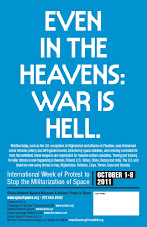
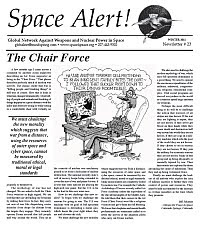

![[Solidarity from Japan for the Jeju] 253 individuals and 16 groups/organizations](http://2.bp.blogspot.com/_gnM5QlRx-4c/TR_YeNVE1yI/AAAAAAAAHWQ/ARyf6oQN0S0/S227/jeju_12_10j.jpg)
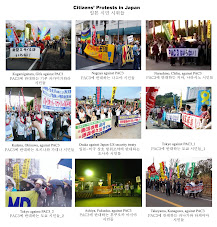
![[Translation] Korean organizations' statement: Immediately cancel the joint ROK-US drill Nov 26](http://2.bp.blogspot.com/_gnM5QlRx-4c/TPOE8VKXHFI/AAAAAAAAGlM/8lryt-8sFjc/S227/1.jpg)
![HOT! [Hankyoreh Hani TV] Beneath the Surface: the investigation into the sinking of the Cheonan](http://4.bp.blogspot.com/_gnM5QlRx-4c/TOI83qht8aI/AAAAAAAAGXU/22SW6Q5ntV8/S227/HaniTV%2BCheonan.gif)

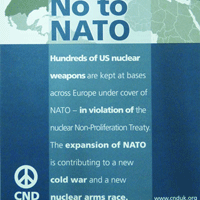

![[Translation]Statement against illegal inspection and unjust lay-off by the Kunsan USAFK!(Nov_2010)](http://4.bp.blogspot.com/_gnM5QlRx-4c/TOPLsVkZMqI/AAAAAAAAGZs/3YnnckIyAaY/S227/gunsan%2Bprotest.gif)
![[Translation] Korean organizations' statement against dispatching special force to the UAE on Nov.](http://4.bp.blogspot.com/_gnM5QlRx-4c/TOP95zHXlCI/AAAAAAAAGak/E0Ug1XtUFfM/S227/antiwarpeace.jpg)
![[Translation] Stop, Joining MD!: South Korean activists' statement and writing on Oct. 25, 2010](http://3.bp.blogspot.com/_gnM5QlRx-4c/TOP7Es4_2sI/AAAAAAAAGac/eWVMPD-U4p0/S227/StopMD.jpg)
![[In Update] People First, NO G-20 (Nov. 6 to 12, Korea)](http://2.bp.blogspot.com/_gnM5QlRx-4c/TJd53XBzHlI/AAAAAAAAFQo/ldO9JPE3eqo/S227/left21_G20.jpg)
![[International Petition] Stop US helipad plan in Okinawa to save great nature](http://4.bp.blogspot.com/_gnM5QlRx-4c/TKC2AHRNzBI/AAAAAAAAFUo/yGWXODTw_uM/S227/yanbaru_w.jpg)

![[Global Network] against the first launch of Quasi-Zenith Satellite, Japan, on Sept. 11, 2010](http://4.bp.blogspot.com/_gnM5QlRx-4c/TIowa1boy4I/AAAAAAAAFDI/82rAi98uq-c/S227/Qzss-45-0_09.jpg)

![[In update] Some collections on the Koreans’ protests against the sanction & war on Iran](http://4.bp.blogspot.com/_gnM5QlRx-4c/TJMvke6t8zI/AAAAAAAAFO4/tamQ8LUnOOA/S227/No+Sanction+on+Iran.jpg)
![[Three International Petitions] to End the Korean war and peace treaty(or peace resolution)](http://1.bp.blogspot.com/_gnM5QlRx-4c/THef7bzWxYI/AAAAAAAAE44/wwdzSDfYhdw/S227/border.jpg)
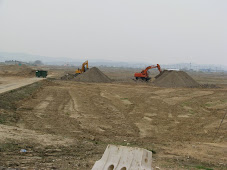


![[Collection of Documents] No Base Learning and Solidarity Program_Korea(June 14 to 20, 2010)](http://1.bp.blogspot.com/_gnM5QlRx-4c/TCTvVuN8NeI/AAAAAAAAEek/8vBJVaHdk10/S227/No-Base-banner.jpg)
![Site Fwd:[John Hines] A U.S. Debate coach’s research trip on the Issues of Korea](http://3.bp.blogspot.com/_gnM5QlRx-4c/TINCO36mzzI/AAAAAAAAE_w/Rds12NcBOXM/S227/Jeju-Peace-Tour.jpg)


![[News Update] Struggle Against the Jeju Naval Base since Jan. 18, 2010](http://1.bp.blogspot.com/_gnM5QlRx-4c/S1vvWaP25uI/AAAAAAAACkg/QvpW1tgOlKM/S226/scrum1.jpg)


![[Urgent] Please spread the Letter!: There was no Explosion! There was no Torpedo! (May 26, 2010)](http://4.bp.blogspot.com/_gnM5QlRx-4c/S_9JmsKEU7I/AAAAAAAAEP8/sAWjSPqxzUI/S227/grounded.jpg)
![Text Fwd: [Stephen Gowans]The sinking of the Cheonan: Another Gulf of Tonkin incident](http://1.bp.blogspot.com/_gnM5QlRx-4c/TAL_FtYKQ-I/AAAAAAAAERE/NEEMijiEcRM/S227/lee-myung-bak.jpg)
![[Japan Focus]Politics in Command: The "International" Investigation into the Sinking of the Cheonan](http://1.bp.blogspot.com/_gnM5QlRx-4c/TBMJ2syJzyI/AAAAAAAAEZU/uTYZccU5vyk/S227/wen_jiabao_and_lee_myungbak.png)
![[Japan Focus] Who Sank the SK Warship Cheonan? A New Stage in the US-Korean War and US-China](http://2.bp.blogspot.com/_gnM5QlRx-4c/S_iQ2vE5ZpI/AAAAAAAAEOU/Oo1SPcAe8FE/S227/buoy_map.gif)
![[Updated on 12/13/10] [Translation Project] Overseas Proofs on the Damages by the Military Bases](http://4.bp.blogspot.com/_gnM5QlRx-4c/S-qSj59gPLI/AAAAAAAAEGM/mwjlFtPE-jo/S227/missile.jpg)
![[International Petition] Close the Bases in Okinawa](http://3.bp.blogspot.com/_gnM5QlRx-4c/S8-z3DYNwNI/AAAAAAAADo4/OswTSchK09M/S227/2.jpg)

![[In Update]Blog Collection: No Korean Troops in Afghanistan](http://4.bp.blogspot.com/_gnM5QlRx-4c/SwnlLD9IewI/AAAAAAAAB9E/oUPssnpNidA/S226/No-Troops-to--Afghanistan.jpg)
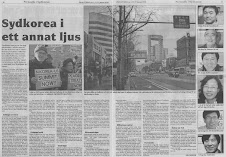

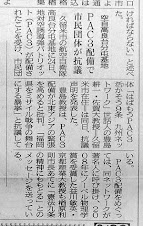

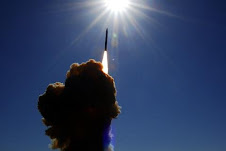






No comments:
Post a Comment